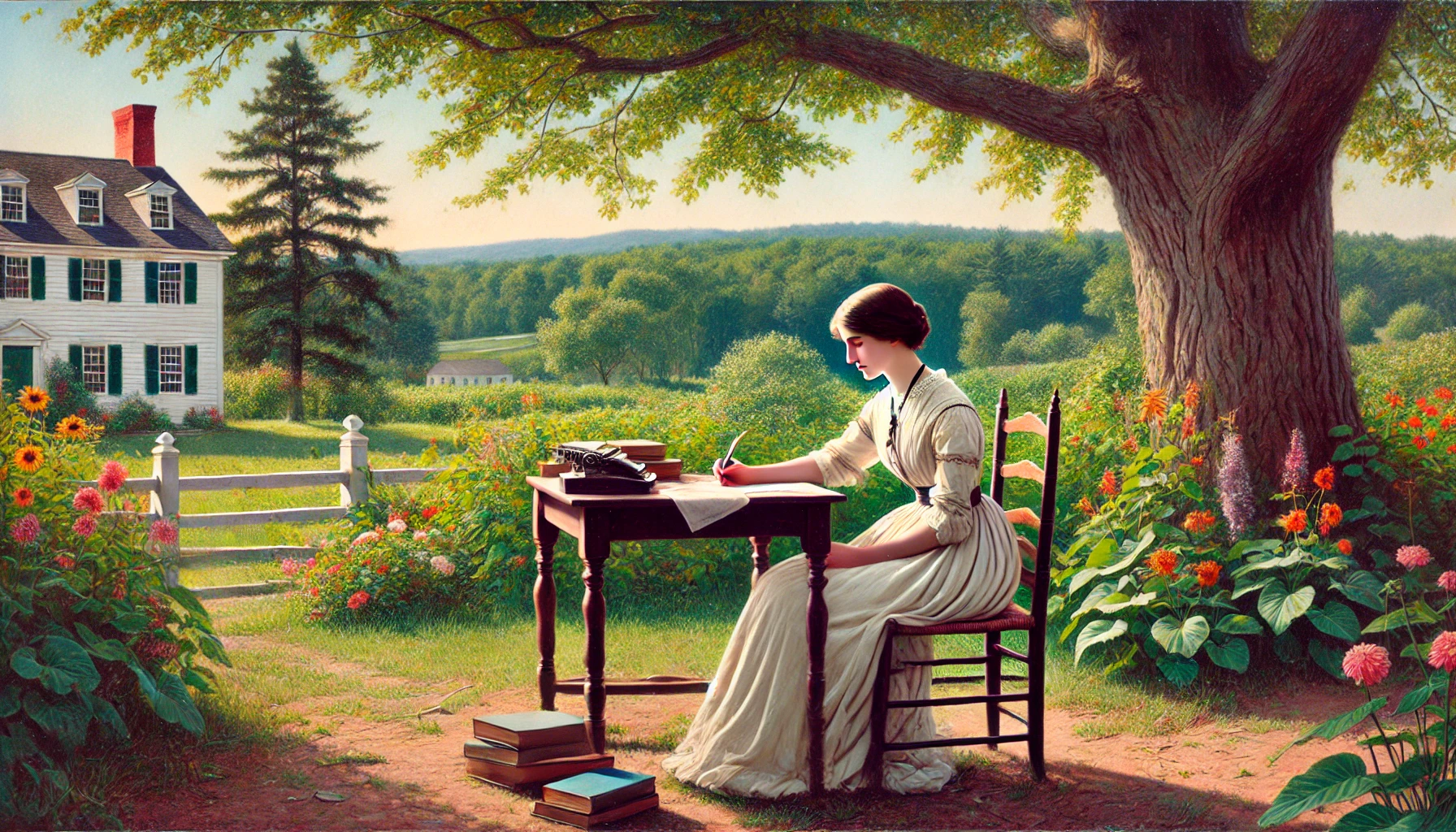Emily Dickinson, one of the most influential poets in American literature, lived a life that, at first glance, might seem quiet and uneventful. Yet behind the doors of her home in Amherst, Massachusetts, was a vibrant and complex mind whose words would resonate through the centuries. Join us on this journey to discover the life and work of Emily Dickinson, a woman who, despite her struggles with mental health, left an incomparable literary legacy.
A Poet’s Childhood (1830-1847)
Emily Elizabeth Dickinson was born on December 10, 1830 in Amherst, Massachusetts. From an early age, Emily showed a fascination with reading and writing, something that was encouraged by her family, particularly her father, Edward Dickinson, a lawyer and politician of the time. Her mother, Emily Norcross Dickinson, was more reserved and this would influence the future poet in complex ways.
At school, Emily was a bright but also reserved student. She attended Amherst Academy and then Mount Holyoke Female Seminary, where her academic performance was outstanding. However, her introspective nature and penchant for questioning religious norms made her feel out of place, which eventually led her to drop out of her formal studies.
 Adolescence and Early Writings (1848-1855)
Adolescence and Early Writings (1848-1855)
Emily’s adolescence was marked by an exploration of her own self and her literary abilities. She began writing letters and poems, many of which reflected her deep introspection and connection to nature. It was during this period that Emily developed a close friendship with Susan Gilbert, who would later become her sister-in-law and one of her greatest confidantes.
Her correspondence with friends and family reveals a deeply sensitive young woman, preoccupied with the existential and philosophical questions that would later become recurring themes in her poetry. However, also evident is her struggle with feelings of loneliness and isolation, which would deepen over time.
Retirement and Overflowing Creativity (1856-1865)
In the 1850s, Emily began to withdraw more and more from social life, opting for seclusion in the family home known as “The Homestead.” During these years, her poetic production intensified enormously. She wrote nearly 1800 poems, many of which remained unpublished until after her death.
Dickinson’s poetry is known for its innovative style: short verse, liberal use of dashes, and an irregular meter that broke with the conventions of her time. Her themes range from death and immortality to nature and love, often with a tone that combines the melancholy with the sublime.
The Last Years and the Legacy of a Poet (1866-1886)
Emily Dickinson’s final years were marked by loss and grief. The death of several loved ones, including her mother and her nephew Gilbert, plunged her into deep sadness. During this time, her reclusiveness became even more pronounced, and she rarely left her home or received visitors.
Despite her isolation, she continued to write until her death on May 15, 1886. It was after her death that her sister Lavinia discovered the hundreds of poems Emily had written and carefully kept. The posthumous publication of her work revealed to the world the depth and originality of her poetic genius.
Emily Dickinson’s Mental Health
Emily Dickinson lived at a time when mental health was not understood as it is today. Her periods of seclusion and melancholy writings have led scholars to speculate about her mental health. Some suggest he may have suffered from depression, anxiety or even avoidant personality disorder. What is clear is that his inner struggle and deep sensitivity are reflected in his work, which resonates with those who have faced their own mental battles.
Major Works
Although Emily Dickinson published only a few poems during her lifetime, her complete body of work includes nearly 1800 poems. Some of her best-known poems include:
- “Because I could not stop for Death” (1863).
- “I’m Nobody! Who are you?” (1861)
- “Hope is the thing with feathers” (1861)
- “A Bird came down the Walk” (1862)
These works are just a sample of his vast poetic output, which continues to inspire and move readers around the world.
NOTE: The images in this article are merely illustrative and were created with artificial intelligence.
Sources
- The Poems of Emily Dickinson: Reading Edition – Thomas H. Johnson, Editor.
- Emily Dickinson: A Biography – Connie Ann Kirk.
- My Wars Are Laid Away in Books: The Life of Emily Dickinson – Alfred Habegger.
- Emily Dickinson’s Letters to the World – Joyce Sidman.





